Abstract
The decision to screen for multiple endocrine neoplasia type 2 (MEN-2) is generally based on family history, the rationale for this approach being the presumed 100% penetrance of the disease. To determine the validity of this presumption we have estimated--by applying modifications of the life-table method--the clinical and screening age-at-diagnosis distributions for MEN-2, using families from the Cancer Research Campaign Medullary Thyroid Cancer Register and one large American family. The clinical penetrance of MEN-2 is shown to be incomplete, an estimated 41% of gene carriers not presenting with symptoms by age 70 on the basis of clinical history. Screening by the standard tests for detecting the earliest manifestations of the syndrome increases the penetrance to an estimated 93% by age 31. There is no evidence of a difference in the age-at-diagnosis distributions between maternal and paternal transmission, or among different families, but there is some suggestion of an earlier onset of medullary thyroid cancer in female gene carriers, and of a tendency of pheochromocytoma to cluster in families. These results can be used to calculate risks to relatives of affected individuals, which in turn can be used to guide decisions on which individuals to screen.
Full text
PDF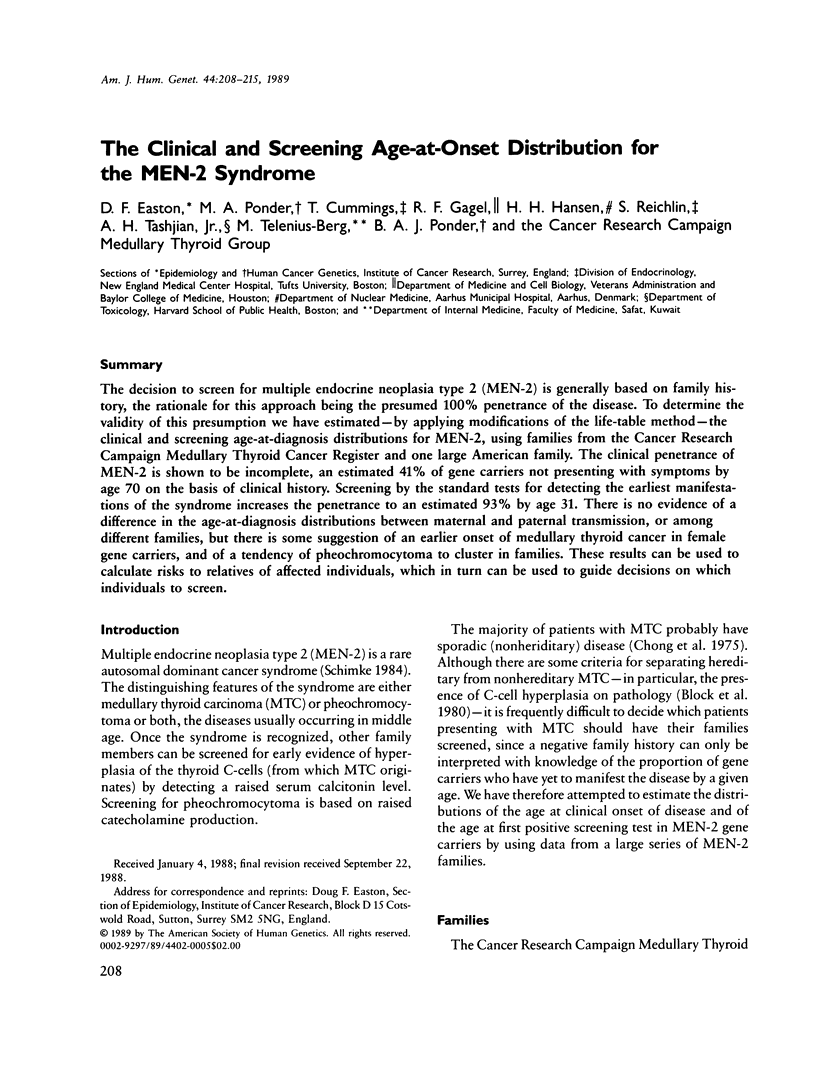
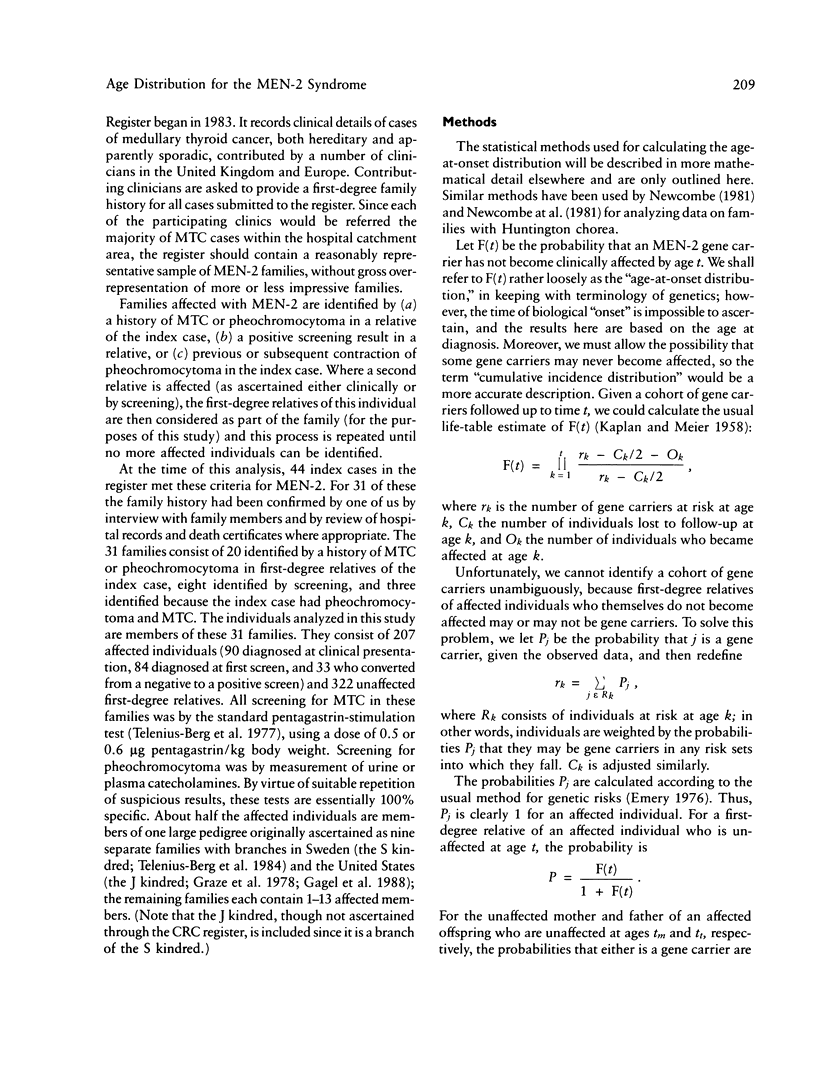
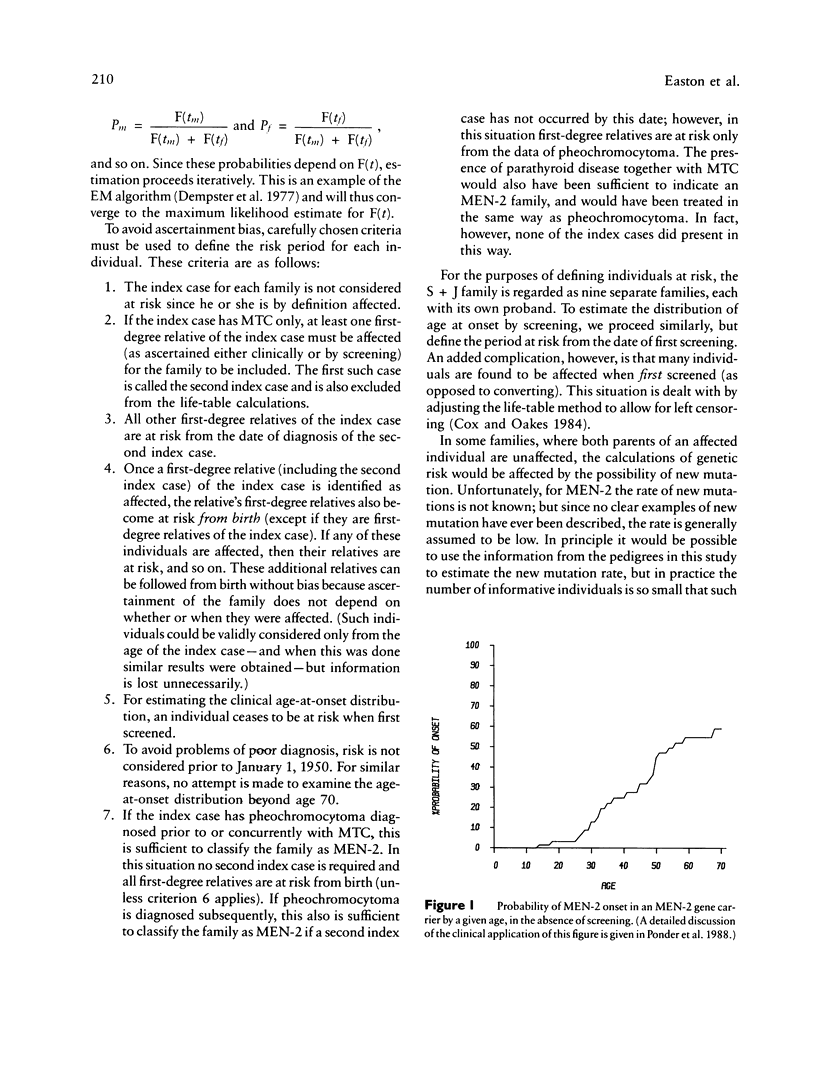
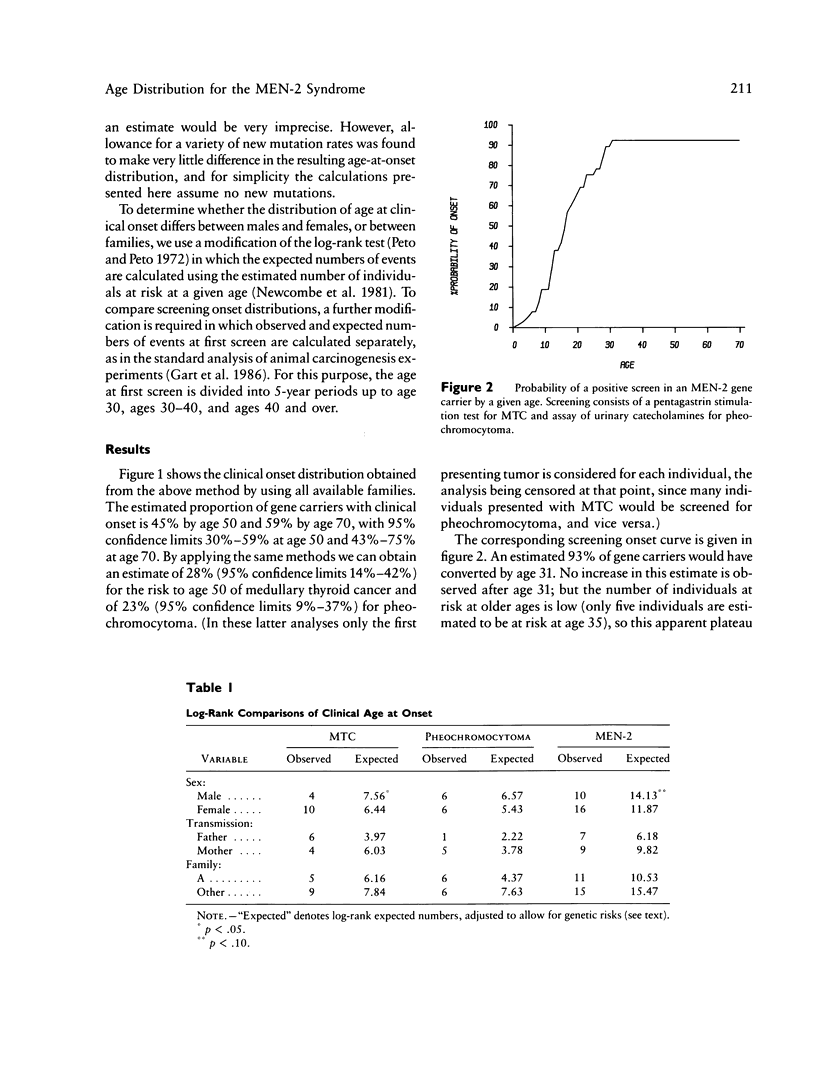
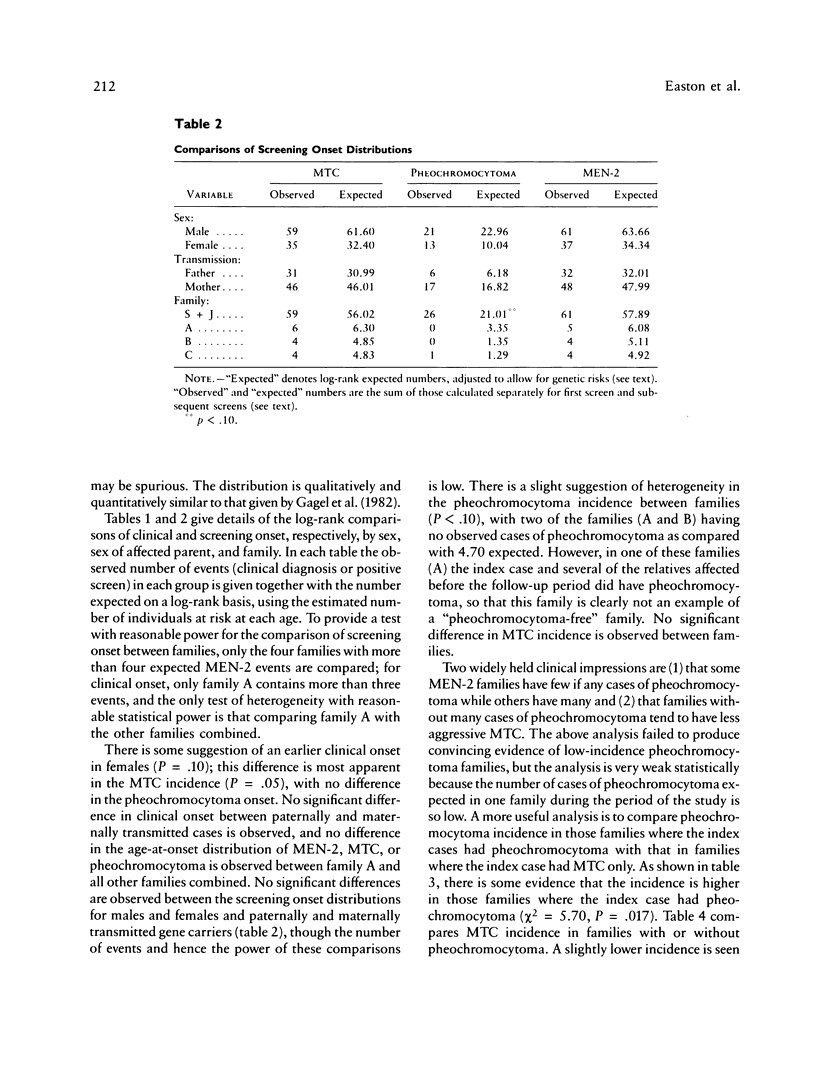
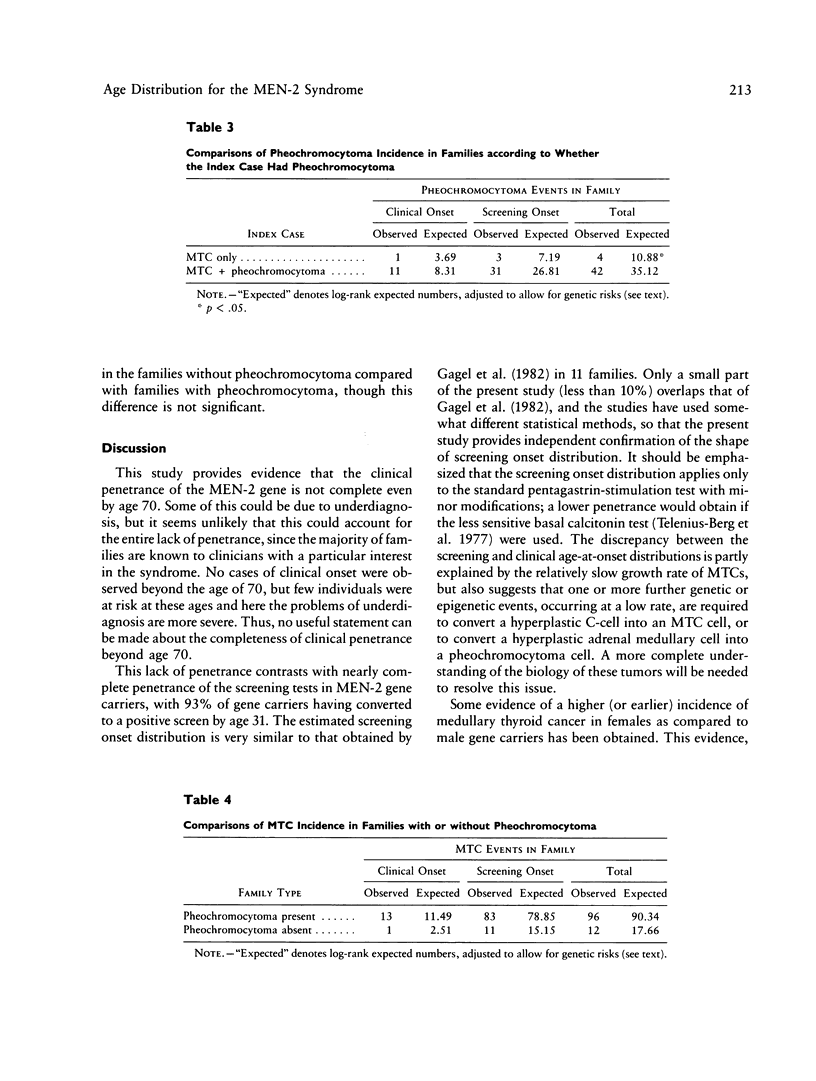
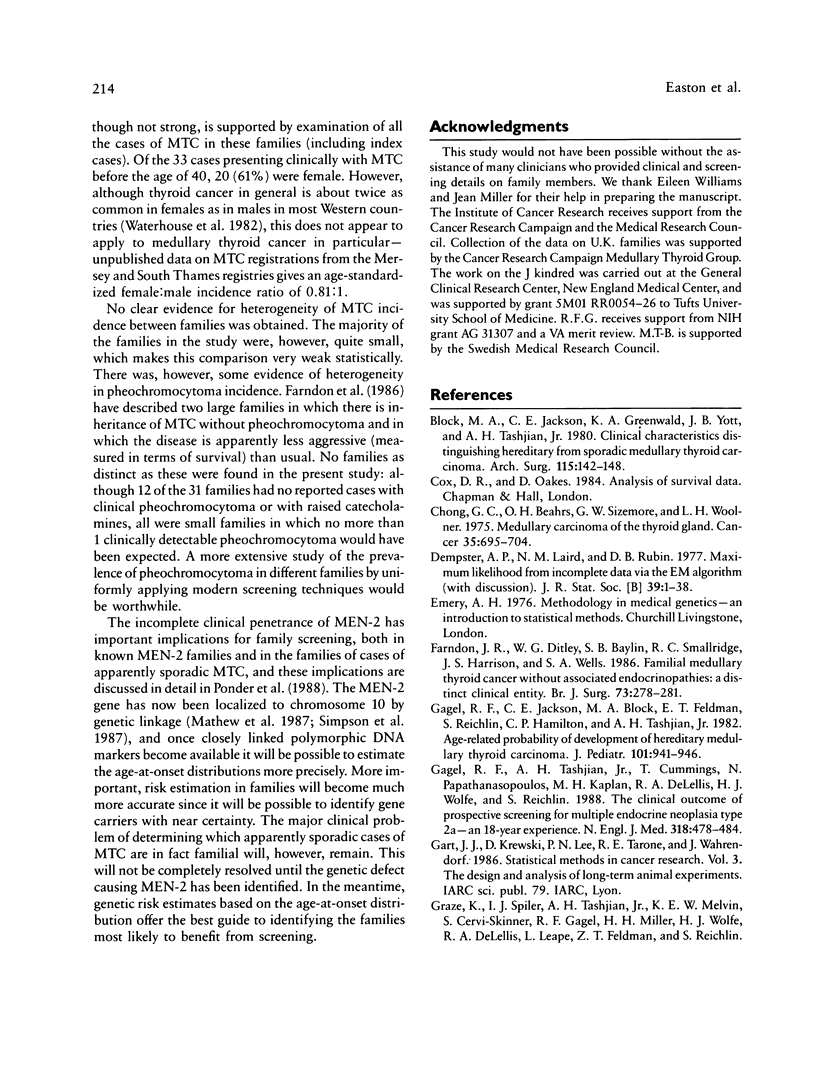
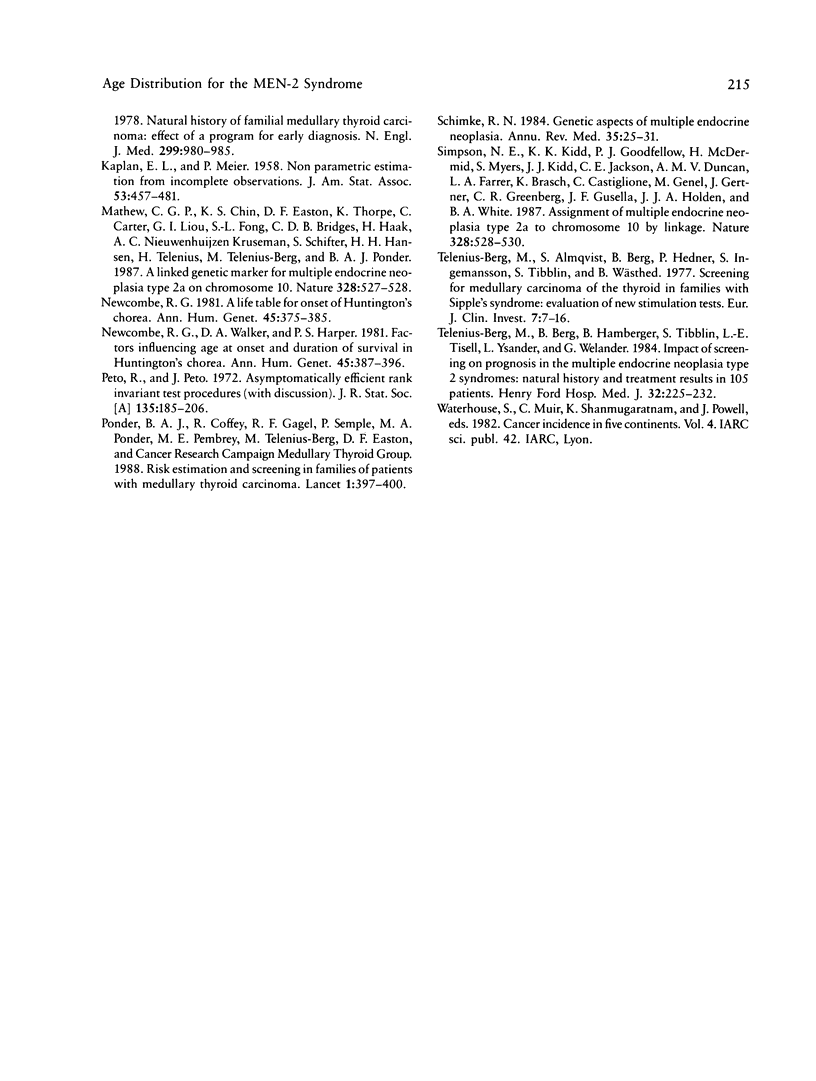
Selected References
These references are in PubMed. This may not be the complete list of references from this article.
- Block M. A., Jackson C. E., Greenawald K. A., Yott J. B., Tashjian A. H., Jr Clinical characteristics distinguishing hereditary from sporadic medullary thyroid carcinoma. Treatment implications. Arch Surg. 1980 Feb;115(2):142–148. doi: 10.1001/archsurg.1980.01380020012004. [DOI] [PubMed] [Google Scholar]
- Chong G. C., Beahrs O. H., Sizemore G. W., Woolner L. H. Medullary carcinoma of the thyroid gland. Cancer. 1975 Mar;35(3):695–704. doi: 10.1002/1097-0142(197503)35:3<695::aid-cncr2820350323>3.0.co;2-w. [DOI] [PubMed] [Google Scholar]
- Farndon J. R., Leight G. S., Dilley W. G., Baylin S. B., Smallridge R. C., Harrison T. S., Wells S. A., Jr Familial medullary thyroid carcinoma without associated endocrinopathies: a distinct clinical entity. Br J Surg. 1986 Apr;73(4):278–281. doi: 10.1002/bjs.1800730411. [DOI] [PMC free article] [PubMed] [Google Scholar]
- Gagel R. F., Jackson C. E., Block M. A., Feldman Z. T., Reichlin S., Hamilton B. P., Tashjian A. H., Jr Age-related probability of development of hereditary medullary thyroid carcinoma. J Pediatr. 1982 Dec;101(6):941–946. doi: 10.1016/s0022-3476(82)80014-0. [DOI] [PubMed] [Google Scholar]
- Gagel R. F., Tashjian A. H., Jr, Cummings T., Papathanasopoulos N., Kaplan M. M., DeLellis R. A., Wolfe H. J., Reichlin S. The clinical outcome of prospective screening for multiple endocrine neoplasia type 2a. An 18-year experience. N Engl J Med. 1988 Feb 25;318(8):478–484. doi: 10.1056/NEJM198802253180804. [DOI] [PubMed] [Google Scholar]
- Mathew C. G., Chin K. S., Easton D. F., Thorpe K., Carter C., Liou G. I., Fong S. L., Bridges C. D., Haak H., Kruseman A. C. A linked genetic marker for multiple endocrine neoplasia type 2A on chromosome 10. Nature. 1987 Aug 6;328(6130):527–528. doi: 10.1038/328527a0. [DOI] [PubMed] [Google Scholar]
- Newcombe R. G. A life table for onset of Huntington's chorea. Ann Hum Genet. 1981 Oct;45(Pt 4):375–385. doi: 10.1111/j.1469-1809.1981.tb00351.x. [DOI] [PubMed] [Google Scholar]
- Newcombe R. G., Walker D. A., Harper P. S. Factors influencing age at onset and duration of survival in Huntington's chorea. Ann Hum Genet. 1981 Oct;45(Pt 4):387–396. doi: 10.1111/j.1469-1809.1981.tb00352.x. [DOI] [PubMed] [Google Scholar]
- Ponder B. A., Ponder M. A., Coffey R., Pembrey M. E., Gagel R. F., Telenius-Berg M., Semple P., Easton D. F. Risk estimation and screening in families of patients with medullary thyroid carcinoma. Lancet. 1988 Feb 20;1(8582):397–401. doi: 10.1016/s0140-6736(88)91191-9. [DOI] [PubMed] [Google Scholar]
- Schimke R. N. Genetic aspects of multiple endocrine neoplasia. Annu Rev Med. 1984;35:25–31. doi: 10.1146/annurev.me.35.020184.000325. [DOI] [PubMed] [Google Scholar]
- Simpson N. E., Kidd K. K., Goodfellow P. J., McDermid H., Myers S., Kidd J. R., Jackson C. E., Duncan A. M., Farrer L. A., Brasch K. Assignment of multiple endocrine neoplasia type 2A to chromosome 10 by linkage. Nature. 1987 Aug 6;328(6130):528–530. doi: 10.1038/328528a0. [DOI] [PubMed] [Google Scholar]
- Telenius-Berg M., Almqvist S., Berg B., Hedner P., Ingemansson S., Tibblin S., Wasthed B. Screening for medullary carcinoma of the thyroid in families with Sipple's syndrome: evaluation of new stimulation tests. Eur J Clin Invest. 1977 Feb;7(1):7–16. doi: 10.1111/j.1365-2362.1977.tb01563.x. [DOI] [PubMed] [Google Scholar]
- Telenius-Berg M., Berg B., Hamberger B., Tibblin S., Tisell L. E., Ysander L., Welander G. Impact of screening on prognosis in the multiple endocrine neoplasia type 2 syndromes: natural history and treatment results in 105 patients. Henry Ford Hosp Med J. 1984;32(4):225–231. [PubMed] [Google Scholar]


